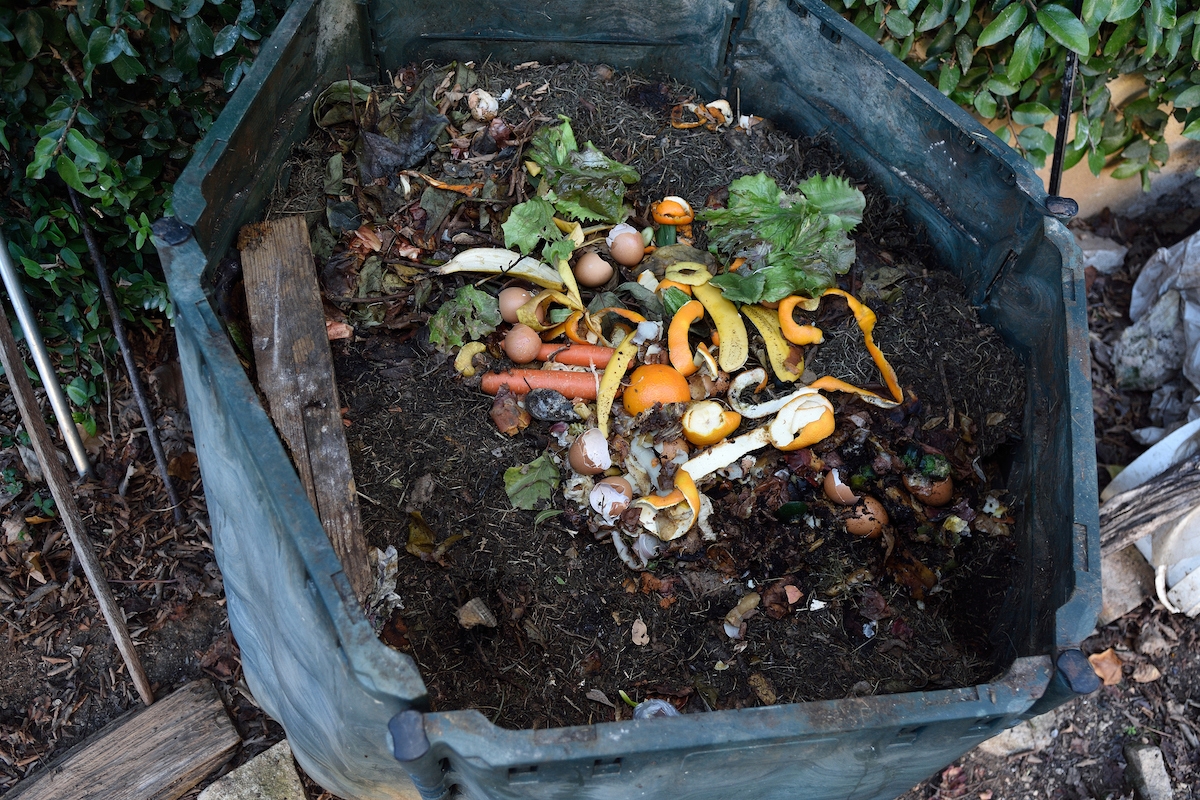
This week is Compost Week. So in this three-part blog series, we’re digging into sustainable, garden-loving ways to deal with food and plant waste at home or in your workplace.
Earlier this week we took a quick look at the basics of Bokashi systems and worm farming. In this post we’re digging into the option of a home compost bin. Each method is great at turning your kitchen and garden waste into nutrient-rich food to feed your garden, containers or even indoor pot plants. It’s just about finding the one that suits your space, your lifestyle and the kind of waste your household produces.
Using a homemade or bought compost bin is a smart idea for people who have a high(ish) ratio of garden to food waste. It also follows that if you have plenty of garden waste, you probably also have the outdoor space to set up a compost bin (or two).
Creating your compost
Whether you’re starting from scratch or using a bought compost bin, it’s a good idea to think about how you’ll create the optimal conditions for producing lovely, rich compost. There are four basic elements: moisture, oxygen, warmth, and fuel.
You can build a DIY compost bin out of materials you have lying around: bricks, wooden pallets, old metal rubbish bins, plastic barrels… With a guide and a bit of construction know how, you can even build a compost bin that tumbles, to aerate your compost easily. Compostguide.com has some great ideas to get you started.
How to get your compost bin booming
- Choose a sheltered, sunny spot: this will help your compost heap or bin get warm enough to encourage the little critters and microbes that will break everything down for you.
- Place it directly on the earth, so that water can drain away and so that worms and other life in the soil can get into your compost easily.
- Make it big enough so that it stays warm from its microbial activity – this will speed up the process and retain more nutrients.
- Start with a layer of brown material like twigs and autumn leaves at the bottom to encourage airflow and provide a source of carbon.
- Continue with layers of ‘green’ and ‘brown’ materials and cover with old woollen blankets, wool carpets or think cardboard.
- Give it a sprinkle of water if it’s drying out, but try not to waterlog it (you can drown the worms).
Compost colour balance
As a basic rule, a compost heap or bin should contain roughly 70% ‘browns’ and 30% ‘greens’.
Browns are mainly carbon, and these materials are usually dry and brittle. Because they are low in water and nitrogen, brown materials can take a long time to break down. The best browns for your bin are fallen autumn leaves, small twigs, bark and untreated wood chips, browned off dry grass clippings, cardboard and paper.
Greens, on the other hand are full of nitrogen and moisture, so they break down quickly, but can also putrefy and smell bad. Together though, browns and greens are a great combo for making compost. Good greens include fruit and vege scraps and peelings, other food waste (although this may attract rats or other animals), and fresh grass clippings.
Don’t feed your compost:
- Weed seeds (most home compost heaps are too cold to kill them),
- Plastic wrap or tinfoil
- Bio-plastics that require commercial composting
- Oils and fats
- More green than brown materials
Some brands are now packaging their food products in home compostable packaging. Check the package to make sure, and cut it up with scissors before you place in the compost, to speed up the process.
If you’re getting the balance right, your compost will be bursting with life, full of worms and other beneficial insects. They’re all helping to break down your compost, so it’s important to protect your heap from pesticides and other chemicals that might harm them. Healthy compost will smell a little earthy, and feel crumbly, warm and slightly damp.
It might take time and experimentation to get there. But your efforts will be rewarded with a nutrient-rich compost that will make your soil better and your plants healthier. Compost is great at improving the quality of all sorts of soils – from heavy clay to dry and sandy.
For heaps (pun intended) of useful info to help you start your own home compost bin, visit the Compost Collective website.

